By Erin Rizzetto (Kutztown University ’22)
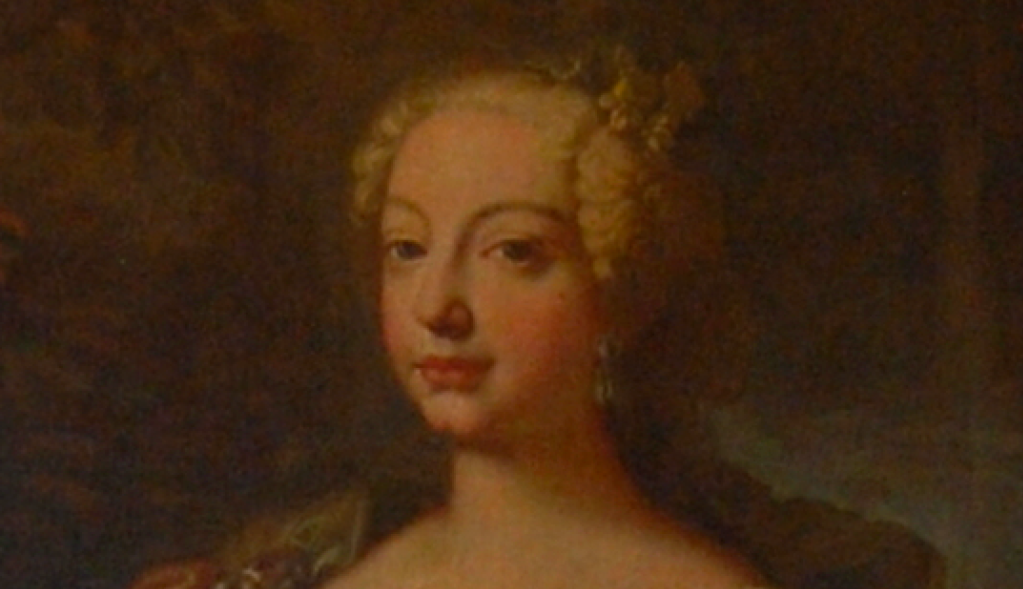
One of the most extraordinary holdings of the Boncompagni Ludovisi archive in the Casino dell’Aurora, rediscovered by HSH Princess Rita Boncompagni Ludovisi in 2010, is a formal diary maintained by the heads of family—dating back in continuous succession to Giacomo Boncompagni (1548-1612), the son of Pope Gregory XIII. For centuries, this diary served principally to memorialize the family’s births, marriages and deaths. But starting in the later 19th century it expanded its scope to take in more personal reflections.
One important entry was written in 1792 by the then head of family, Antonio (II) Boncompagni Ludovisi (1735-1805), son of Gaetano Boncompagni Ludovisi (1706-1777, Prince of Piombino from 1745). It is a somber memoir in honor of his late mother, Laura Chigi Albani della Rovere (1707-1792), the grandniece of Pope Alexander VII Chigi (reigned 1655-1667).
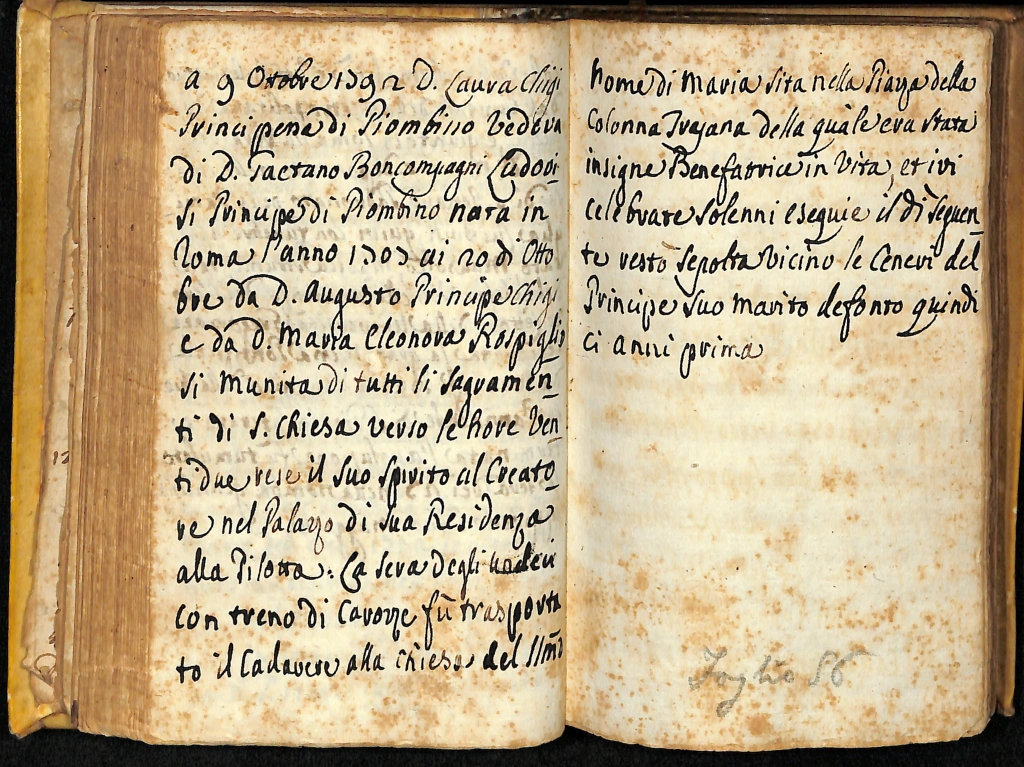
The entry reads as follows (Italian text and English translation):
A 9 Octobre 1792 D(onna) Laura Chigi Principessa di Piombino vedova di D(on) Gaetano Boncompagni Ludovisi Principe di Piombino nata in Roma l’anno 1707 ai 20 di Ottobre da D(on) Augusto Principe Chigi e da (D(onna) Maria Eleonora Rospigliosi munita di tutti li sagramenti di S(anta) Chiesa verso le hore ventidue rese il suo Spirito al Creatore nel Palazzo di sua Residenza alla Pilotta. La sera degli undieci con treno di carozze fù trasporto il cadavere alla chiesa del Santissimo Nome di Maria sita nella Piazza della Colonna Traiana della quale era stata insigne Benefattrice in vita, et ivi celebrate solenni esequie il dì seguente restò sepolta vicino le ceneri del Principe suo marito defonto quindici anni prima.
“On the 9th of October 1792 Donna Laura Chigi Princess of Piombino, widow of Don Gaetano Boncompagni Ludovisi, Prince of Piombino, born in Rome in the year 1707 on the 20th of October to Don Augusto, Prince Chigi, and Donna Maria Eleonora Rospigliosi, equipped with all the sacraments of the holy Church, around 10 PM gave her Spirit to the Creator, in the palace of her residence at the Pilotta. The evening of the 11th [of October], with a procession of carriages, her body was transported to the Church of the Most Holy Name of Mary located in the Piazza of the Column of Trajan, of which she had been the distinguished Benefactress in life, and there her solemn funeral was celebrated. The following day she was buried near the ashes of the Prince, her husband who had died fifteen years earlier.”
Despite her long life, which reached its 84th year, and many formal documents (most in the Boncompagni Ludovisi collection in the Vatican Apostolic Archive), little is known about the personal aspects of this Princess of Piombino except the bare facts. Pio Pecchiai in his 1946 biography of her husband (Notizie biographiche di Don Gaetano Boncompagni Ludovisi, VII Duca di Sora — II Principe di Piombino [1706-1777]) pays Laura Chigi scant notice after her wedding at age 19. However even from this succinct obituary notice by her son, her legacy as a matriarch lives on as a dignified woman whose primary roles included that of beloved wife to her husband Gaetano, compassionate mother, and benevolent benefactor of the church.
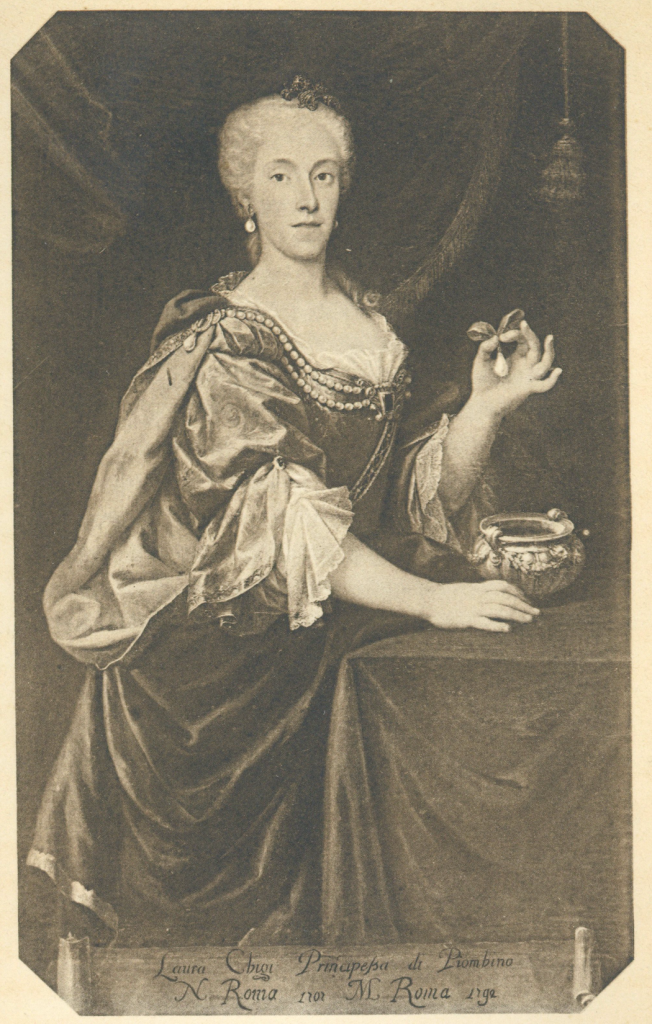
As it happens, at the time of Laura’s death the Boncompagni Ludovisi family maintained a second book of obituaries, with the long title Memorie genealogiche della Famiglia Boncompagni, con alcuni cenni della sua origine, e quindi unita alla Famiglia Ludovisi, fino alla generazione di D. Luigi Boncompagni Ludovisi, Principe di Piombino che morì il giorno 9 maggio 1841. The work stretches over some 330 pages, and takes in most major family members from the creation of Giacomo Boncompagni (born 1548) as the first Duke of Sora to the birth of the historian of science Baldassare Boncompagni Ludovisi in 1821.
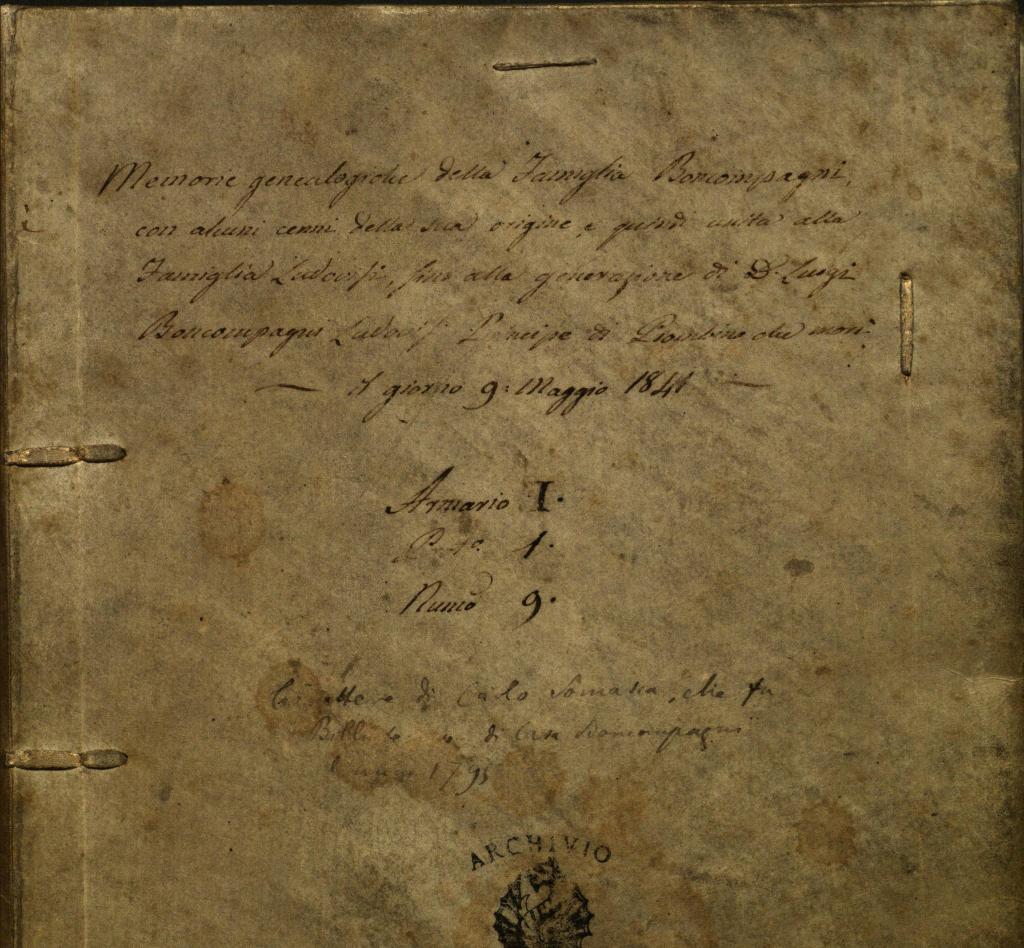
The main author of the book, we are told on the volume’s vellum cover, was longtime family archivist Carlo Rosa alias Somasca, who served the Boncompagni Ludovisi from ca. 1760 until ca. 1795. In any case, after his death in 1800, the notices become much more succinct. The fact that the obituary of Laura Chigi in this book was written soon after her death—assumedly by her contemporary Somasca—lends special value to this notice, which adds much more detail and color to what has been previously known. Here is the entry (again, Italian text and English translation):
D. Laura Chigi Duchessa di Sora e Principessa di Piombino
Da D. Augusto Chigi Principe di Farnese Marescialle della Santa Sede al conclave e nepote di Alessandro Papa VII, ed a D. Maria Elenora Rospigliosi nepote di Clemente Papa IX ebbe il natale in Roma D. Laura li 20 Ottobre dell’ anno 1707 nel suo Palazzo sito in Piazza Colonna. Educata appresso li genitori e giunta all’anno decimo nono di sua età fù data e sposa a Don Gaetano Boncompagni Ludovisi, Duca l’Arce et il matrimonio segui nel Feudo Paterno dell’Ariccia vicino alla città di Albano li 7 novembre dell’anno 1726.
Terminate le feste nunziali passò col marito allo stato di Sora e nella Residenza dell’Isola fu accolta con dimostrazioni di giubilo dai Parenti di lui e numeroso vassallaggio per restituirsi novamente in Roma, ove felicemente diede alla luce il primo suo parto l’anno 1728. Divenuta Duchessa di Sora andò l’anno 1734 a risiedere nella Città dell’Aquila nella quale il Duca d. Gaetano in nome di D. Carlo Borbone infante di Spagna conquistato il Regno di Napoli esercitava il vicariato Generale de sopra tutta la Provincia dell’ Abbruzzo.
All’arrivo in Napoli della Regina Amalia di Sassonia fù dichiarata dama di Corte l’anno 1738. Dimorò alcuni anni in quella Capitale dalla quale si restituì in Roma l’anno 1745, e dopo le seconda legazione straordinaria del Principe Don Gaetano alla Corte di Madrid ebbe il contento di stabilmente ricuperarlo l’anno 1747. Amara fù la perdita che ne fece l’anno 1777…
[crossed out] Vive ancora questa Signora in età di ottanta e più anni nel corso de quali ha dovuto soffrire come suole accadere a chi vive longamente la mancanza di molti congiunti, e sopra tutta quella inaspettata del figlio Cardinale Don Ignazio morto a Bagni di Lucca li 9 Agosto dell’ anno 1790
…e la pianse quindieci anni che tanti furono quelli della sua vedovanza impiegata in un perfetto ritiro e nell’esercizio di un condotta veramente Cristiana.
Durante questo tempo ebbe a soffrire la mancaza di molti stretti suoi congiunti, ma sopratutto la colpì quella del Cardinale Ignazio suo figlio in fresca età perito l’anno 1790 nel soggiorno dei Bagni di Lucca ove si era trasferito da Roma per sperimentare il beneficio di quelle acque minerali.
Oppressa più dal peso degli anni, che da una cagionevole salute munita di tutti li Sagramenti di Santa Chiesa soccombere li 9 ottobre dell’ anno 1790. La sera degli undici fù trasportato il cadavere alla chiesa del Santissimo Nome di Maria della quale in vita era stata insigne Benefattore e quivi celebrate solenni esequie resto sepolto presso le ceneri del defonto suo marito.
L’anno sequente 1793 Donna Ippolita Principessa Rezzonico di lei figlia p(er) impulso di affetto verso de suoi Genitori e per riflesso di Religione determinatasi di unire nello stesso luogo la sua spoglia mortale quando fosse piacciuto al S(ua) D(ivina) M(aiestà) chiamarla a se, surrogò all’antica iscrizione che si leggeva fatta porre dopo la morte del padre la sequente epigrafe
Memoriae / Gaetani Boncompagni et Laurae Chigiae / Parent(ibus) Opt(imis) / Hyppolita Rezzonica / Ossa Ossibus hic Sociare Cupiens / C(um) V(ixisset) P(ietatis) C(ausa) / Anno Reparat(ae) Sal(utis) / MDCCXIII
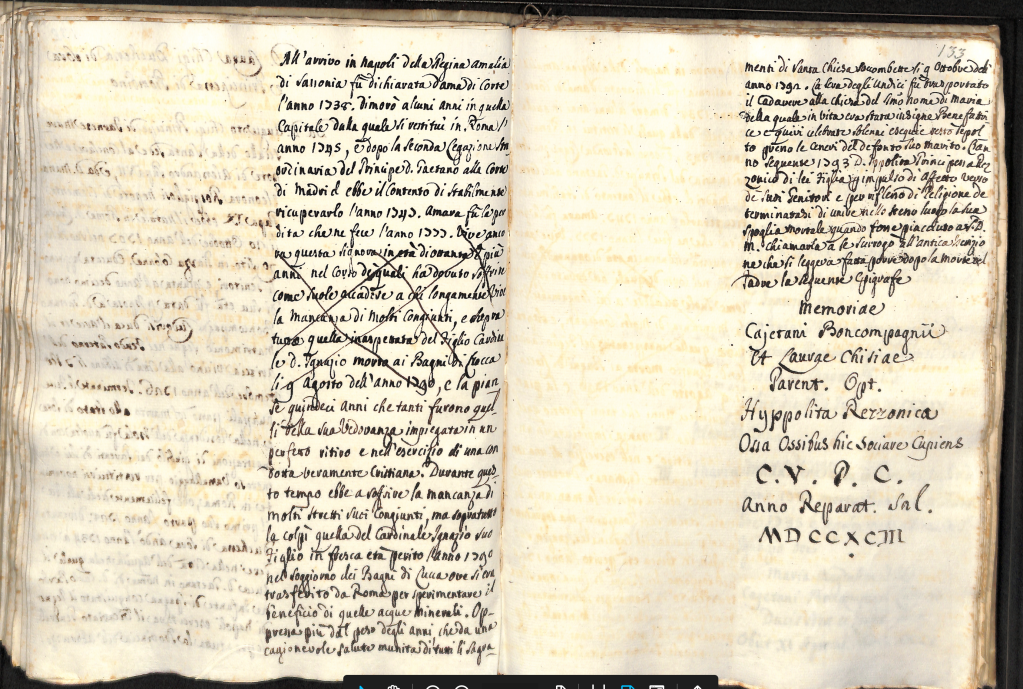
“D. Laura Chigi Duchess of Sora and Princess of Piombino
(To) D. Augusto Chigi, Prince of Farnese, Marshal to the Conclave of the Holy See, and nephew of Pope Alexander VII, and to D. Maria Elenora Rospigliosi, niece of Clement Pope IX, she was born in Rome on 20 October 1707 in their Palace Located in Piazza Colonna. Educated by her parents, at nineteen years of age, she was joined in marriage to Don Gaetano Boncompagni Ludovisi, Duca of Arce. The wedding followed in her paternal Feud of Ariccia near the city of Albano on 7 November of the year 1726.
After the wedding celebrations, she passed with her husband to the state of Sora and in the Residence of the Isola [del Liri] she was greeted with demonstrations of jubilation by his parents and a numerous collection of vassals to return to Rome again, where she happily gave birth to her first child in the year 1728. Having become Duchess of Sora, she went in 1734 to reside in the city of L’Aquila in which the Duke Don Gaetano in the name of Don Carlo of Bourbon, Infant of Spain who had won the Kingdom of Naples, exercised the General Vicariate over all the Province of Abruzzo.
Upon the arrival in Naples of Queen Amalia of Saxony, she was declared a Lady of the Court in the year 1738. She resided for a few years in that capital from which she returned to Rome in the year 1745, and after the second extraordinary legation of Prince Don Gaetano to the Court of Madrid had the pleasure of receiving him back in the year 1747. Bitter was the loss that she experienced in the year 1777…
[crossed out] This lady still lived to the age of more than eighty years, in the course of which she had to suffer, as usually happens to those who live a long time, that is the loss of many relatives, and above all the unexpected one of her son Cardinal Don Ignazio, who died at Bagni di Lucca on August 9th of the year 1790
…and she bewailed [the loss] for the fifteen years that constituted her widowhood, spent in a perfect retirement and in the exercise of a truly Christian conduct.
During this time she had to suffer the loss of many close relatives, but above all she was struck by that of Cardinal Ignazio, her son, at a premature age who perished in the year 1790 during a sojourn at the Bagni di Lucca, where he had travelled from Rome to experience the benefit of those mineral waters.
Oppressed more by the weight of the years, than by poor health, equipped with all the Sacraments of the Holy Church, she succumbed on October 9 of the year 1790. On the evening of the 11th (of October) her corpse was transported to the church of the Most Holy Name of Mary of which she had been an outstanding distinguished Benefactor, and there, once the solemn funeral rites were celebrated, she was buried near the ashes of her departed husband.
The following year, 1793, Donna Ippolita Principessa Rezzonico her daughter, impelled by affection towards her parents and as a reflection of religion, having decided to unite in the same place her mortal remains when it was pleasing to His Divine Majesty to call her to himself, she put in place, instead of the old inscription that one read made after the death of her father, the following epigraph:
To Gaetano Boncompagni and Laura Chigi / Best of parents / Ippolita Rezzonico / Wishing here to join (her) bones to (their) bones / When she has died, out of devotion / In the year of salvation accomplished / 1793”
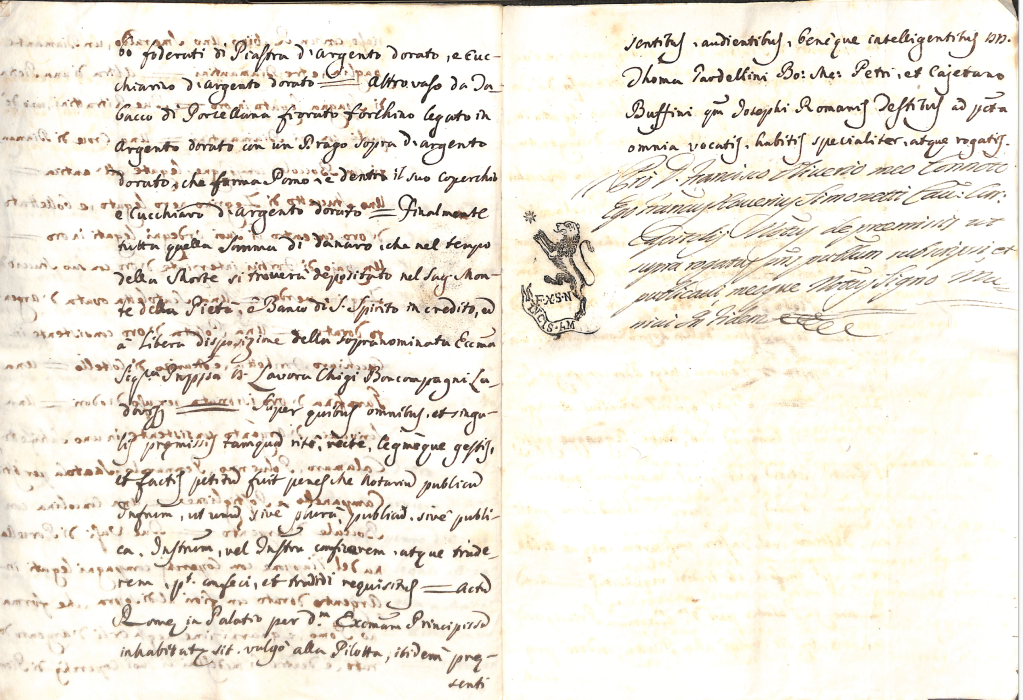
Between these two death notices, one written by her son and the other by a long-serving family archivist, we have the outlines of a biography. Laura Chigi Albani della Rovere was born in Rome on 20 October 1707, to Augusto Chigi della Rovere (1662-1744), Prince of Farnese, and Eleonora Rospigliosi (1682-1734). Laura married Gaetano Boncompagni Ludovisi, the son of Antonio I (1658-1731) and Eleonora Boncompagni Ludovisi (1686-1745, her husband’s niece), on 7 November 1726 in Ariccia (where the Chigi family palace still stands), 25 km southeast of Rome. The couple resided in Rome at the Casino Florenzi a Magnanapoli before the birth of a daughter, Maria Teresa, who died in 1729 aged not quite fifteen months. In all, the couple would have eight children together, four dying in infancy.
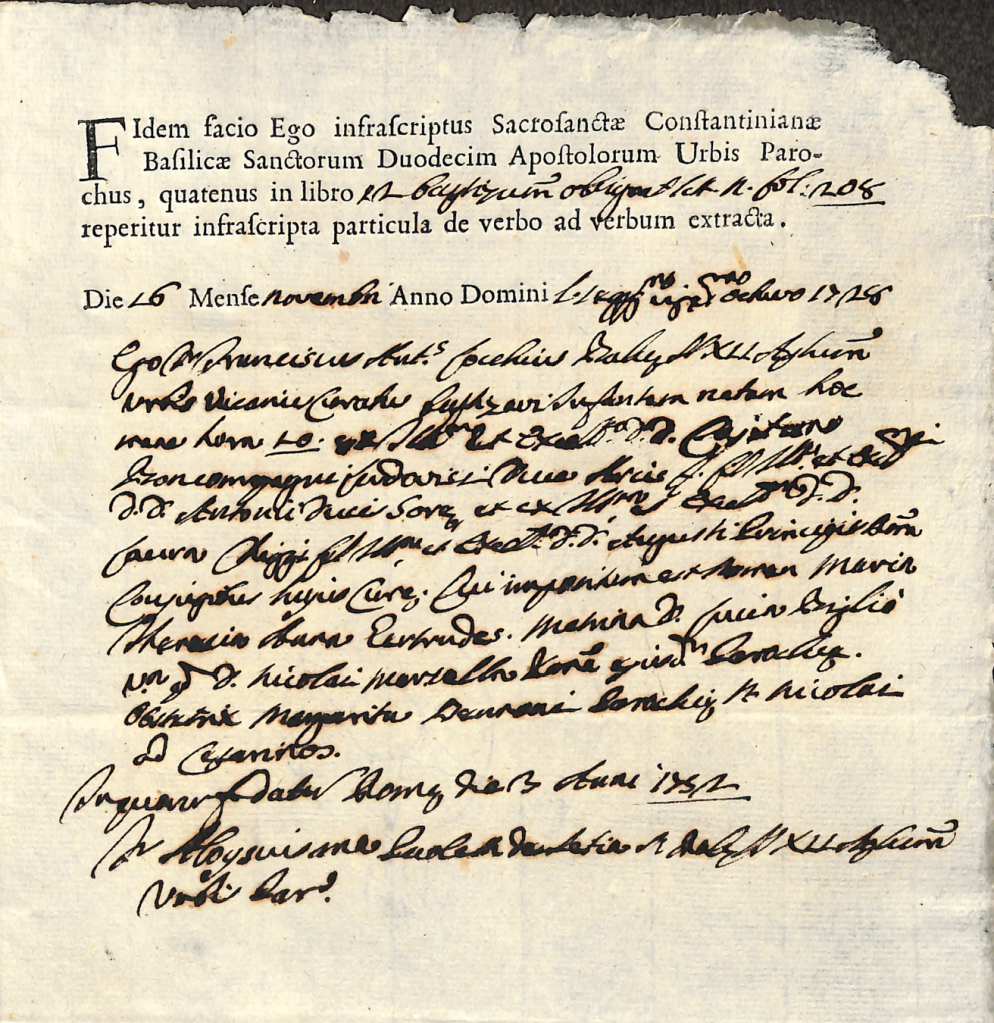
In 1734, after the elevation of Eleonora Boncompagni Ludovisi to Princess of Piombino, Gaetano and Laura received the title Duke and Duchess of Sora. Soon Gaetano received charge of the city of L’Aquila, newly annexed by the Kingdom of Naples, which he administered for about a year as representative of the future Charles III of Spain (= Charles VII of Naples and Charles V of Sicily, reigning from 1734).
An official diary found in the Casino dell’Aurora archive documents Laura’s travel from the 12th to the 15th of July 1734, when she traveled from Sora in southern Lazio to L’Aquila in Abruzzo to join her husband. As Ruth Tucker (Rutgers ’22) has shown in a 2021 Rutgers University Aresty Research Project, “on the 110 kilometer journey, which saw lavish entertainments at each stop, she was accompanied by a military escort of almost four dozen men, including attendants who carried two chairs and two beds for her use”. During this tenure at L’Aquila, Antonio, their first-born son, arrived on 16 June 1735.
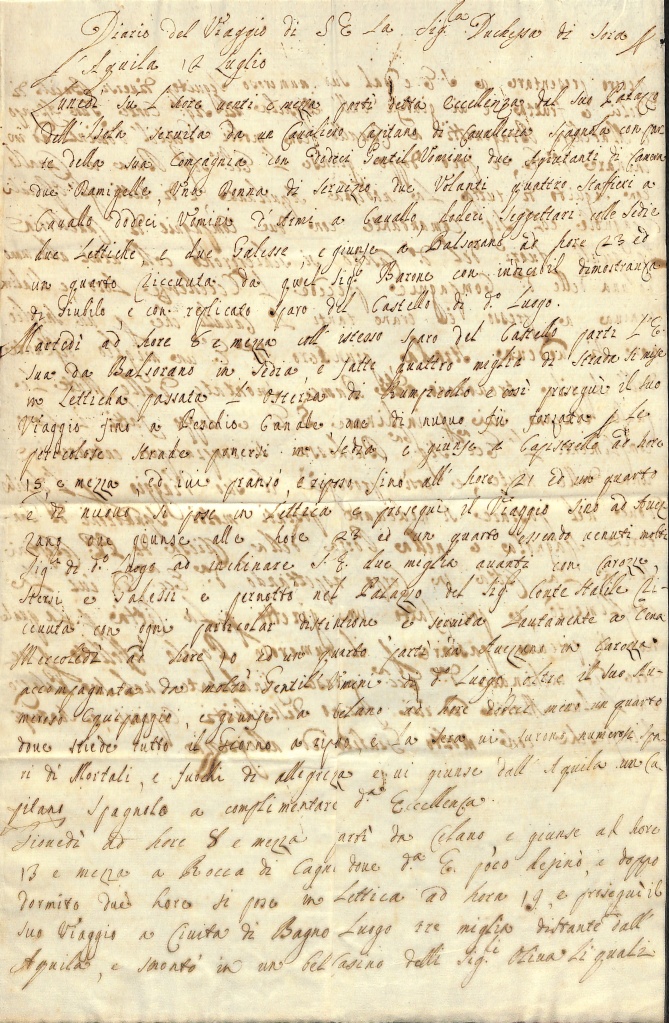
These obituaries are understandably concerned with Laura Chigi’s titles. Upon arrival in Naples of Amalia of Saxony (1724-1760), the wife of the future Charles III of Spain, in February 1738 Chigi was declared a Lady of the Court; Amalia reigned as Queen of Naples and Sicily from June 1738 to June 1759, and then for about 13 months as Queen Consort of Spain. In 1745, Gaetano succeeded his mother Eleonora, and became Prince of Piombino, awarding Laura the title of Princess of Piombino. On 24 May 1777, her beloved husband passed away at the age of 70 years old in Rome.
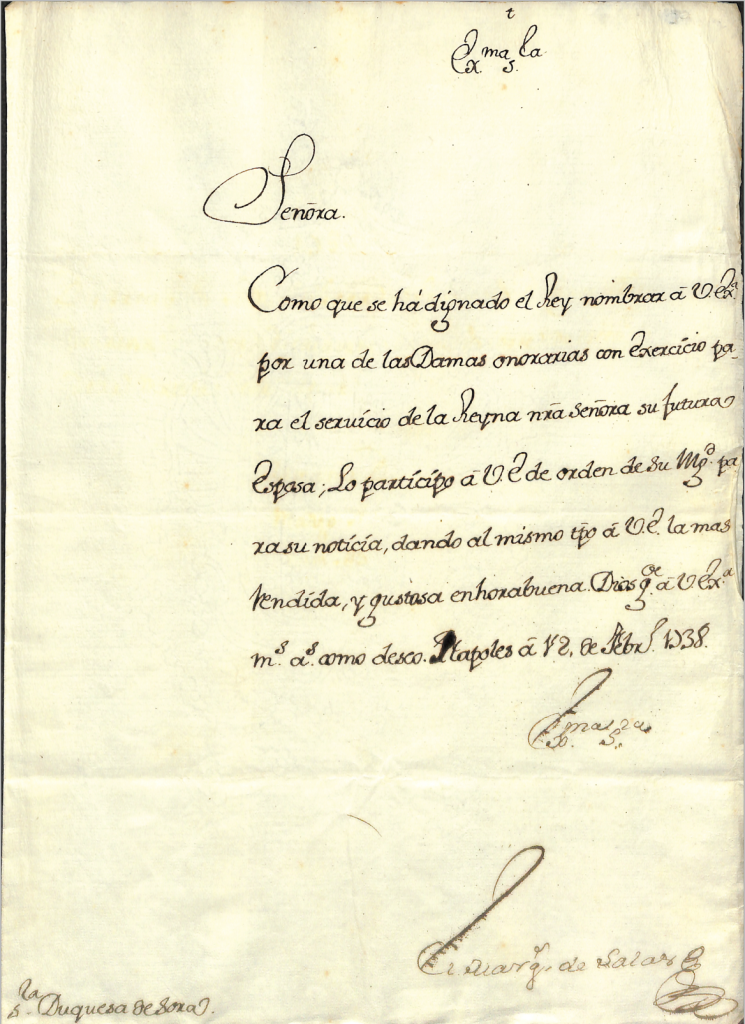
During this time and up until her own death in 1792, Laura had suffered from the losses of many close relatives, but we learn that none had seemed to impact her quite as hard as the loss of her seventh child, her cherished son Cardinal Ignazio Boncompagni Ludovisi (born 1743). Ignazio was made Cardinal by Pope Pius VI in 1775 and had served as Vatican Secretary of State from 1785 until 1789. He passed away in 1790 in Bagni di Lucca, a city known for its healing mineral waters, where he had moved from Rome upon falling ill.
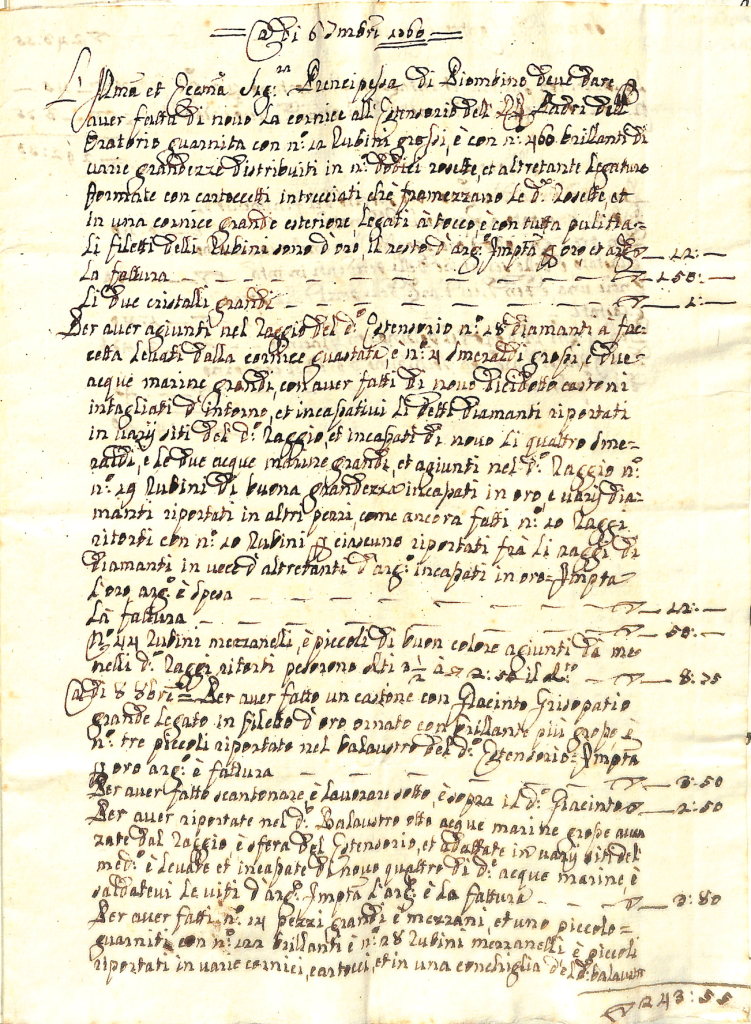
Laura Chigi Boncompagni Ludovisi herself passed away on 9 October 1792 at her residence at the Palazzo della Pilotta—a new fact that we learn from the head of family book—at the age of 84. (It was not known that the family still owned that palace.) The notice written by her son Antonio II emphasizes that she led a long, fulfilled life dedicated to her children, husband, and a strong devotion to the Church of the Most Holy Name of Mary at the Forum of Trajan. That is where her funeral was held, as we learn for the first time; she was buried next to her dear husband Gaetano.
Erin Rizzetto is a senior majoring in Art History at Kutztown University and a summer 2022 intern for the Archivio Digitale Boncompagni Ludovisi. She hopes to continue her research in art history with a focus on Early Modern Women artists during her graduate studies. She would like to thank HSH Princess Rita Boncompagni Ludovisi for the honor of allowing access to her private archive. Erin would also like to express her sincerest gratitude to Dr. T. Corey Brennan for his continued guidance and encouragement throughout her research. Erin resides in Bethlehem, Pennsylvania.
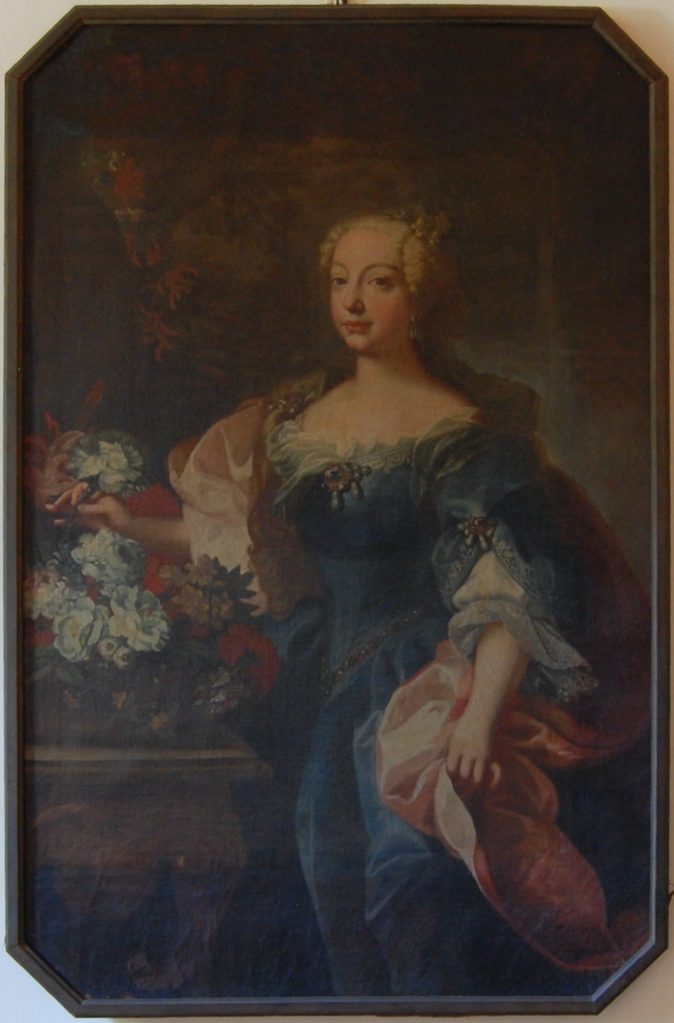
Gentilissimi, sono una storica dell’arte, dottoranda all’università di Tor Vergata di Roma. Mi sono imbattuta in un documento relativo all’ostensorio donato nel 1723 da Ippolita Ludovisi Boncompagni alla Chiesa Nuova. Nello stesso documento c’è un’aggiunta del 1760 che attesta che Laura Chigi fa incastonare molte altre pietre preziose. Sono alla ricerca di documenti sulla commissione e sulle motivazioni della donazione. Si tratta forse di un ex voto?
Sarei felice di potermi confrontare su questo e altri temi con gli studiosi dell’archivio di Villa Ludovisi. Con i più cordiali saluti
Si prega di spedire il suo indirizzo e-mail a tcbr@classics.rutgers.edu. Abbiamo documenti, sembra…